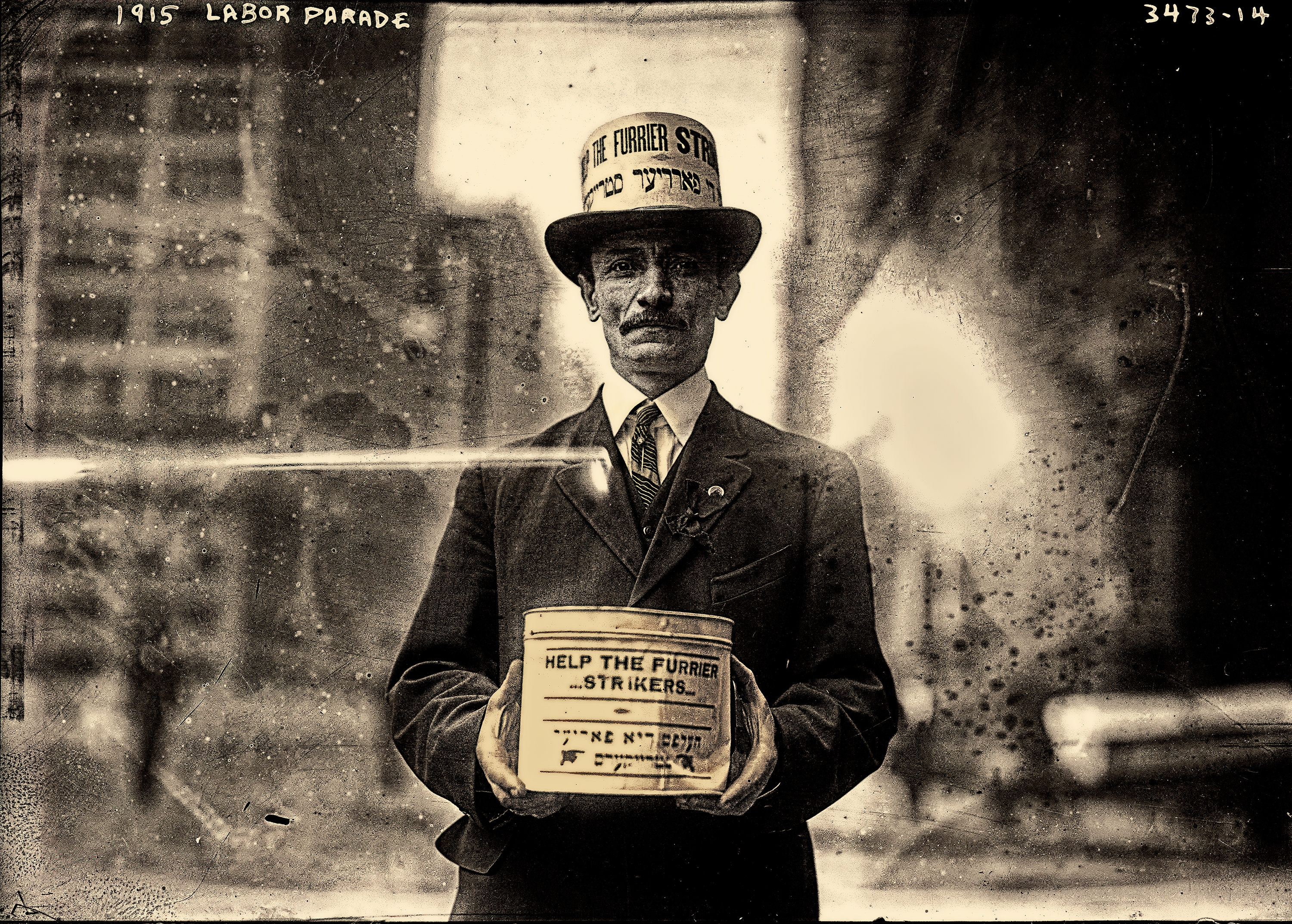The camera that took this photograph was probably fitted with a collapsible cloth bellows between the lens and the housing that held a glass-plate negative. As the photographer flexed the bellows in and out for focus, its opaque coating would eventually begin to flake off and shafts of ambient light would penetrate the camera’s dark interior and streak across the image. This adventitious light had evaded the photographer’s intent, and it competed for the viewer’s attention with the subject he had composed according to human rules and labeled with human words.

The words, too, were changing. Within this frame, for example, they were demarcated into separate languages written in separate alphabets, English and Yiddish. But as of the date imprinted by the photographer at the top of his document, the European language Yiddish was undergoing American erasure.
“Help the furrier strikers,” reads the English of 1915 on the pair of cylinders that demarcate the details of the man between them, and his tie and tie pin and the symbols in his buttonhole communicate something 1915-American that complements those words. But the man’s eyes, mouth and hands belong to the naked aspect of his body, and in its nakedness that isn’t regulated by social system. Like the light leak, it is a sign of loss of organization. The text that tries to express it begins in Yiddish, Helft die, “Help the,” but then it collapses into a mere transliteration of English words written in Yiddish’s Hebrew alphabet. It can only stammer, “Helft die furrier strikers.”
The Hebrew letters, unintelligible in Hebrew, are visual evidence for a transition as undeniable as the laws of optics. On balance for the better, a language and its way of thinking are losing the meaning they possessed just one narrow ocean ago.

Wild light that evades control by the lens can be thought of as a sign of something different to come. But as the camera continues in use and the light comes in time to spread over its every image, whatever it was that was intended for shaping by the lens will go as whitely featureless as a blank page.
__
An earlier post, https://jonathanmorse.blog/2012/08/26/cylindric-equilibrium/, also uses the image of the striker.